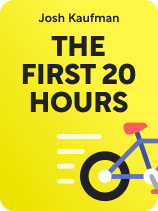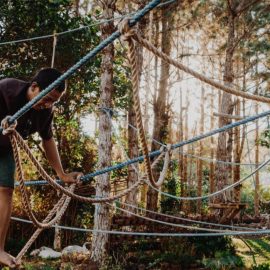

This article is an excerpt from the Shortform book guide to "The First 20 Hours" by Josh Kaufman. Shortform has the world's best summaries and analyses of books you should be reading.
Like this article? Sign up for a free trial here.
Is the 10,000-hour rule true? How long does it really take to become proficient in a skill?
There’s a notion going around that you must invest 10,000 hours of practice if you want to adopt a new skill. But, that’s not quite the way it is. In The First 20 Hours, skill acquisition expert Josh Kaufman sets the record straight.
Read more to learn the truth about the 10,000-hour rule.
Is the 10,000-Hour Rule True?
Learning a new skill requires time and effort, but Kaufman argues that it’s not as hard as people often think: You can achieve a decent level of proficiency in most skills with only 20 hours of practice. He attributes the misconception that learning new things is too hard and too time-consuming in part to the 10,000-hour rule, an idea first popularized by Malcolm Gladwell in Outliers. According to Gladwell, becoming an expert in any skill requires at least 10,000 hours of deliberate practice.
(Shortform note: Gladwell’s 10,000-hour rule may be even more misconstrued than Kaufman suggests. In Outliers, Gladwell writes that it takes 10,000 hours to become an expert in a particular skill, but he uses that estimate not as a recommendation but instead as an illustration of the role opportunity plays in being able to master skills. He argues that most highly successful people have had the luxury to be able to devote thousands of hours to their craft and that mastery isn’t just a matter of talent or effort but also of luck and privilege.)
So, is the 10,000-hour rule true? Kaufman points out a crucial factor about skill acquisition that’s often lost in translation: There’s a difference between learning a skill and mastering it. The 10,000-hour rule applies only to attaining an expert-level performance in a skill, which isn’t the goal for most learners. Most of us want to learn a new skill for personal enjoyment and satisfaction, not to become world-class experts.
(Shortform note: Basic knowledge of a skill and mastery each have their advantages and disadvantages. If you’ve developed basic competence in many skills, you can combine diverse insights and come up with innovative ideas. If you master a skill, you can develop a deep and intuitive understanding of it and rise above your competitors. Because each has its benefits, some experts suggest you find a balance between these two approaches and become T-shaped: Develop a deep understanding of one skill and a broad exposure to multiple others. This way, you can combine deep specialist knowledge of one skill with a broad perspective that comes from dabbling in various skills.)
Kaufman writes that, if you just learn the essential components of a skill, you’ll boost your performance significantly. Only after reaching a certain threshold does it become harder and more time-consuming to improve, and only then does the 10,000-hour rule come into play.
(Shortform note: The idea that you can become relatively good at a skill just by learning the key components is supported by the 80/20 rule (also known as the Pareto Principle), which Gary Keller explains in The One Thing. This rule states that 20% of your effort leads to 80% of the results. This means that you can achieve most of your desired outcome by focusing on the few most important aspects of the skill. For example, if you want to learn a foreign language, you can hold 80% of everyday conversations by learning a small set of the most common words.)

———End of Preview———
Like what you just read? Read the rest of the world's best book summary and analysis of Josh Kaufman's "The First 20 Hours" at Shortform.
Here's what you'll find in our full The First 20 Hours summary:
- A simple and effective method for learning almost any skill in 20 hours
- The misconceptions that hold us back from learning new skills
- Actionable tips to help you optimize your skill-building experience






